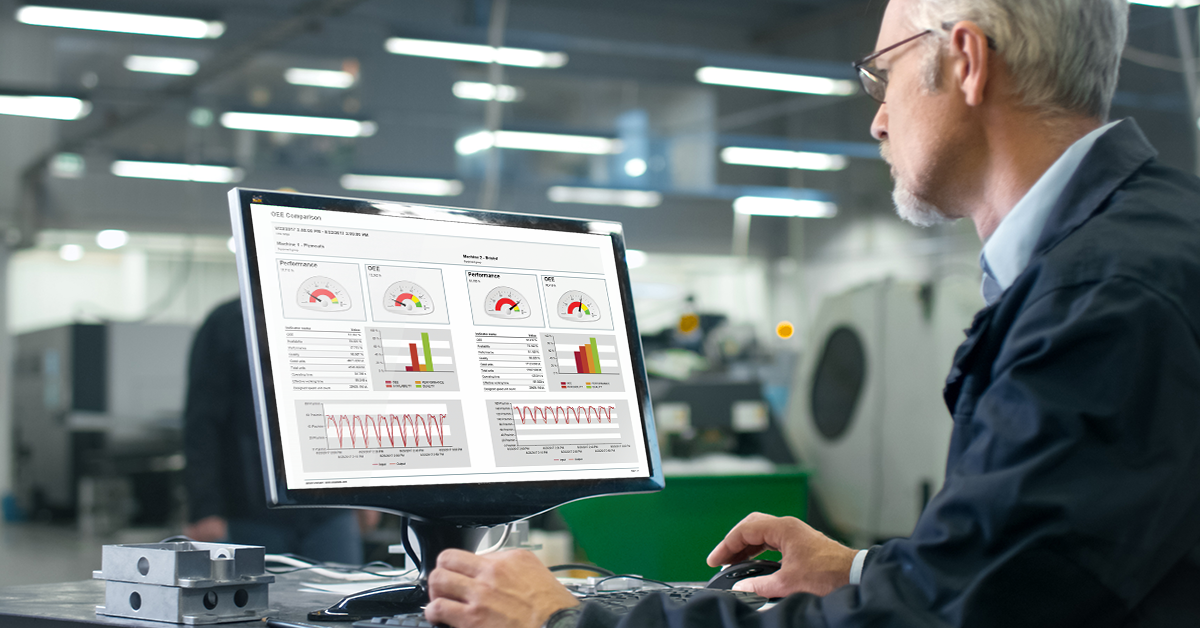Measuring, analyzing, and enhancing overall equipment effectiveness (OEE) of an operation can yield significant benefits for manufacturers.
OEE expresses productivity as a percentage. For manufacturers, calculating this value and determining the underlying causes of any loss can provide valuable insights into areas needing improvement. Even a modest OEE increase of around five per cent can substantially improve productivity. OEE concentrates on three primary factors for overall improvement: availability, performance and quality.
Core factors of OEE
Availability, performance and quality are integral to calculating OEE. Availability accounts for any loss of production time due to events like unplanned stops, for instance, equipment failures or material shortages. This also covers planned stops such as changeover times or scheduled maintenance.
Performance loss includes anything that may cause the process to run slower than maximum speed. This could include issues such as machine wear, substandard materials, misfeeds and jams.
Finally, quality losses address any defective parts or products that need to be reworked or scrapped. These three factors are used to calculate a percentage as follows:
To ensure an accurate OEE percentage, collecting comprehensive and precise operational data from the plant floor is essential.
Besides information on the key OEE factors, a detailed analysis of the potential causes and areas for improvement is also necessary. This requires the collection and analysis of both real-time and historical data.
Real-time data allows for rapid identification of issues that may reduce measured effectiveness and can enable quicker improvements or adjustments. Evaluating historical data helps operators note any trends that may impact OEE and provides a holistic overview of production shifts, recurring issues, or other factors that may offer opportunities for improvement.
This enables management to prioritize actions oriented towards effectiveness, which can also translate into cost savings by reducing wastage, downtime and inefficiencies.
Smart solutions for a data-driven approach
One way to monitor and ultimately increase OEE is by using a software that can effectively manage all three core factors. COPA-DATA’s zenon software platform is an advanced automation system with a wide range of applications across many industries. It offers over 300 communication protocols and sophisticated networking technologies to connect with plant equipment and software for a comprehensive overview of all activity.
zenon can help to improve availability through several strategies. Its integrated features can optimize equipment changeover times and increase machine HMI availability, as well as documenting cleaning procedures to optimize time usage.
To mitigate performance losses, zenon also provides clear, convenient overviews of all plant processes. It enables performance-oriented plant operation with real-time OEE calculation and can manage small stoppages or machine speed changes through automatic data acquisition and real-time filtering. It can also limit quality loss and further improve OEE percentage by supervising and documenting any violations of operator-defined setpoints, and by analyzing quality indicators based on operational data to reduce the number of product rejects.
Improving green credentials with OEE
Along with the efficiency, productivity and financial gains possible from increasing OEE, adopting a software-based approach can also help businesses meet sustainability goals.
Improving the overall efficiency of a production line is a step towards a greener plant, but the software itself can also have wider benefits. For example, zenon can act as a building management system by supervising and controlling utility usage and identifying areas where energy consumption can be reduced.
OEE data can also be integrated with ISO 50001. This standard was created to help organizations continuously improve their energy efficiency, save costs and reduce emissions. By combining OEE data with energy consumption data, operators can gain real-time insight into the relationship between their production and energy usage, allowing them to take corrective action to improve both in tandem.
In an increasingly connected industry landscape, manufacturing businesses adopting a data-driven approach stand to gain a competitive advantage. Monitoring and increasing OEE is a powerful tool for operational optimization, and software platforms such as zenon offer an integrated approach, using real-time and historical data to analyze and identify areas for improvement.
Plants that use software to track and increase OEE can ultimately improve their productivity, quality, and performance for a smarter, greener, and more efficient operation.
Learn more here.

